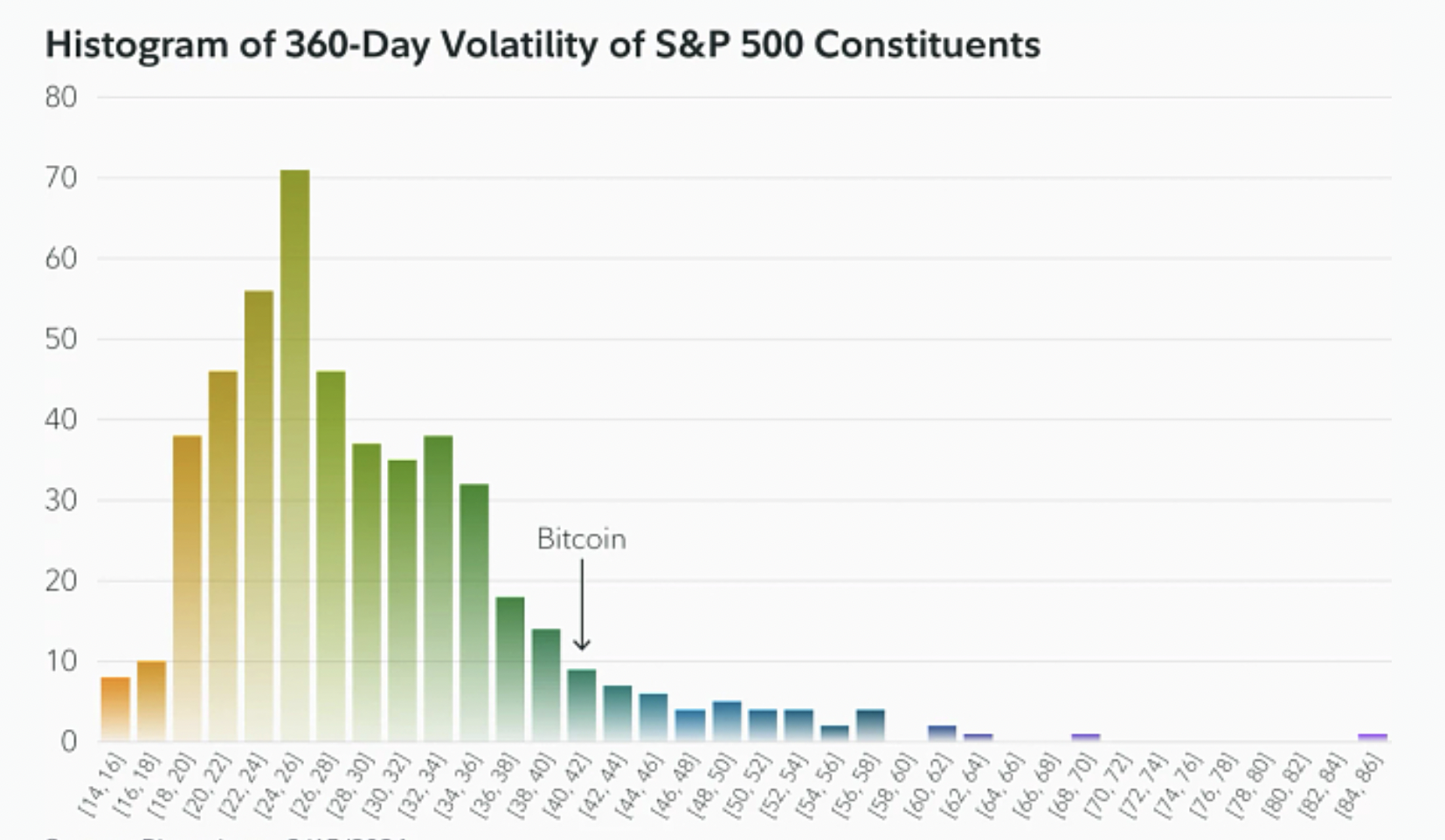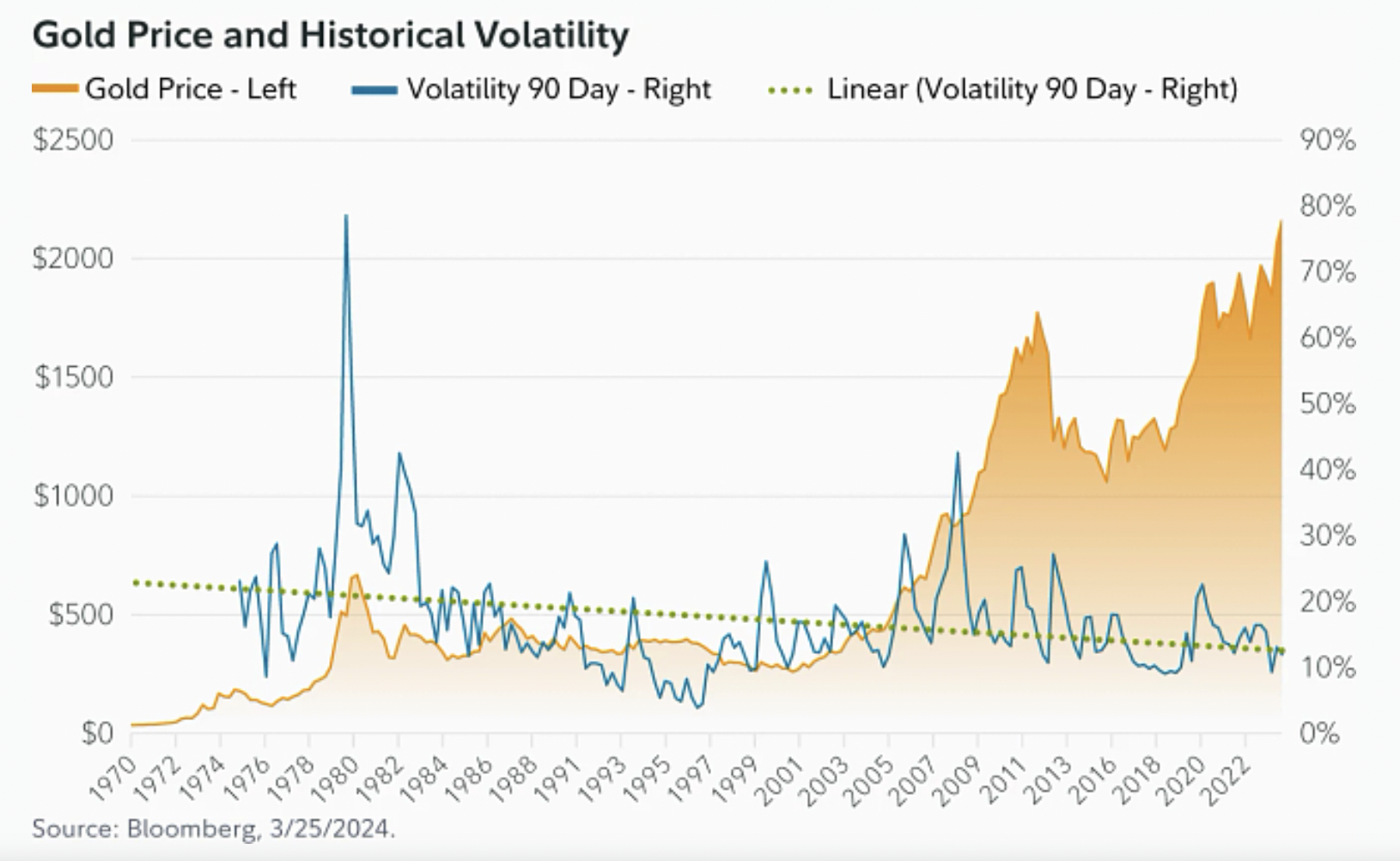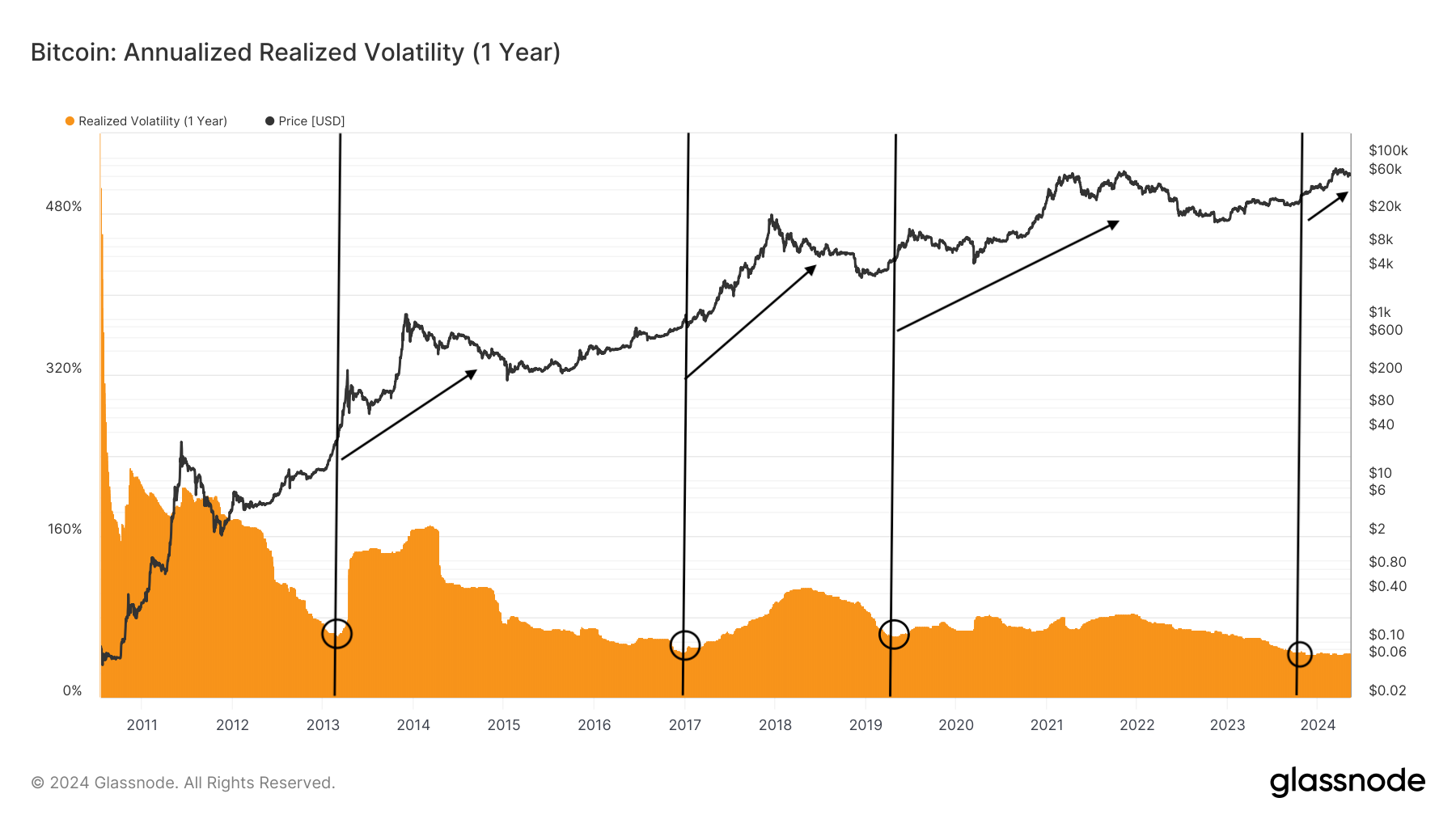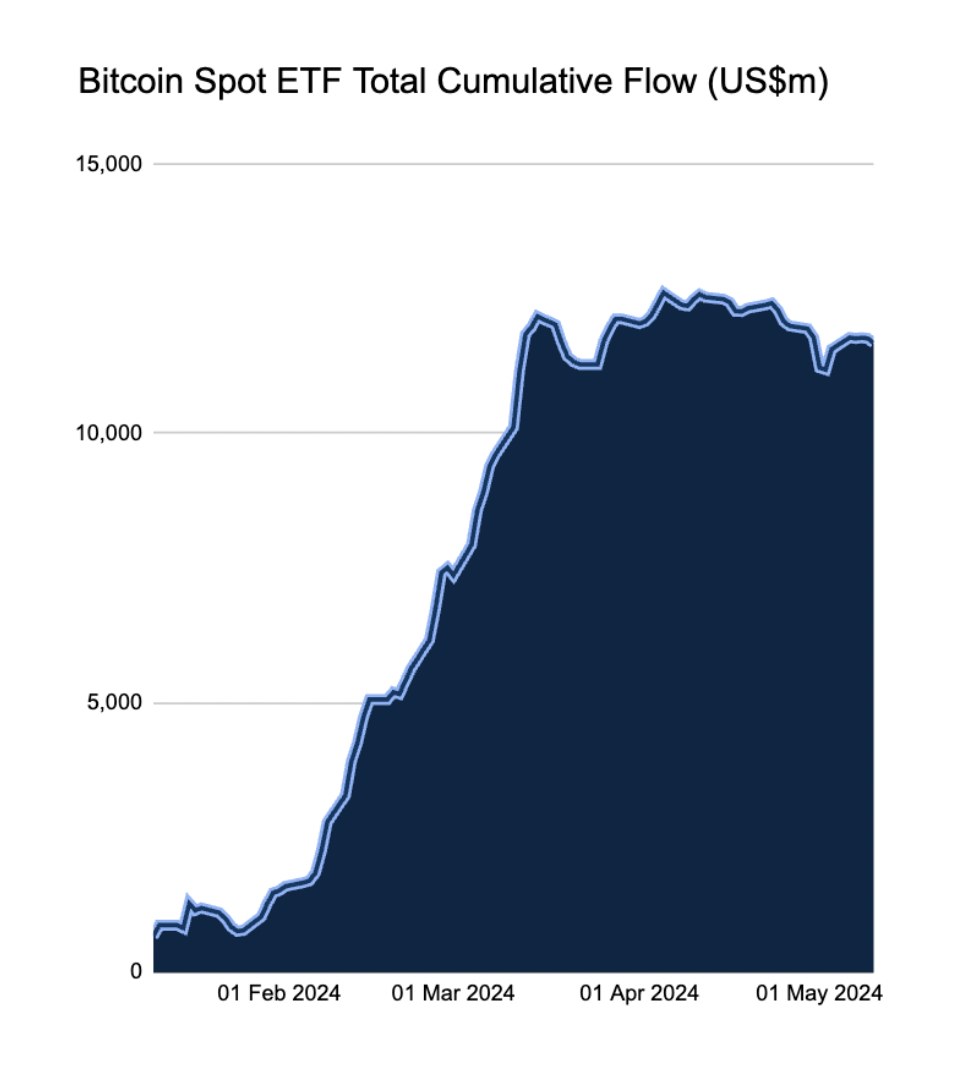The volatility of Bitcoin (BTC) on the annual time frame has fallen to less than the volatility of stocks

The volatility of Bitcoin (BTC) on the annual timeframe has fallen below that of major technology stocks, including Tesla, Meta, and Nvidia, indicating its growth towards becoming a more mature and stable asset class.
Bitcoin has become more stable than many S&P 500 stocks
As of May 11, Bitcoin’s one-year realized volatility, which represents the standard deviation of returns from the average market return, was approximately 44.88%. In comparison, the annualized realized volatility of the “magnificent seven” stocks like Tesla, Meta, and Nvidia was more than 50%.
Moreover, Bitcoin has shown relatively lower volatility compared to 33 out of nearly 500 companies in the S&P 500 Index, Fidelity Investment noted in its latest report.
Most notable:
“Bitcoin was actually less volatile than 92 S&P 500 stocks in October of 2023 when using historical volatility numbers achieved over a 90-day period. Some of these names are also large-cap and mega-cap stocks.”

Bitcoin mirrors gold’s volatility patterns
Bitcoin’s annual volatility in its early years was over 200%, a typical trend among newer asset classes with higher capital flows. This is because these inflows represent a smaller proportion of the total capital base.
Therefore, new investments are unlikely to significantly impact market prices or the decisions of marginal buyers and sellers, as shown in the Bitcoin long-term volatility chart below, which shows a gradual stabilization of volatility over time with a downward-sloping regression line.

The recent volatility patterns in Bitcoin are very similar to the volatility patterns in gold in its early trading years. Like gold, Bitcoin has gone through a period of price discovery, initially characterized by high volatility, which gradually subsides as the market matures.
Gold prices rose with inflation after its separation from the US dollar in 1971 and the legalization of its private ownership in 1974. As a result, the precious metal’s volatility reached over 80 during the early 1970s – nearly double the volatility of Bitcoin in April 2024.

However, as gold has become an established asset class with a more stable price range, its volatility has decreased. This similarity suggests that Bitcoin, like gold, is moving towards a more stable asset class as it becomes more integrated into the broader financial landscape.
Related: Bitcoin Outperforms Gold in Investor Portfolio Allocation – JP Morgan
One key piece of evidence emerges by comparing Bitcoin’s annual volatility of about 44% at its current price highs above $60,000 with about 80% three years ago when the price was at roughly the same level.
“What this may indicate is a growing belief that Bitcoin is maturing, which has been further accelerated by the historic approvals of several spot Bitcoin exchange-traded products in the US,” says Fidelity researcher Zach Wainwright, adding:
“Bitcoin was nearly half as volatile in 2024 at $60,000 than in 2021. When you put all of this together, a thesis begins to emerge that points to increased acceptance of Bitcoin due to potential maturity.”
Will major BTC prices jump ahead?
Interestingly, a period of low annual volatility in Bitcoin has preceded significant price increases. In other words, accumulation sentiment among existing and new Bitcoin investors tends to rise when the price stabilizes.

Bitcoin’s one-year volatility was around 43% in December 2023. Since then, its price has risen by around 75%, further fueled by demand for Bitcoin ETFs in the US. As of May 11, these ETFs have attracted $11.68 billion cumulatively.

Robert Mitchnick, head of digital assets at BlackRock, the world’s largest asset manager, Considerations The coming months are likely to see important players such as sovereign wealth funds, pension funds and endowments interacting with Bitcoin ETFs.
Institutional investors typically have strict risk management protocols. Lower volatility in the asset class translates into more stable and predictable returns, which better align with their investment strategies.
Related: 39% of Institutional Investors in Canada Have Exposure to Cryptocurrencies: KPMG
“It is very important to remember that this takes time; “These companies are just starting to do their due diligence,” independent market analyst Scott Melker said ArguesAdding:
“The massive institutional flood of money that will push Bitcoin to all-time highs.”
Melker expects the price of Bitcoin to rise to a range between $100,000 and $150,000 due to expected ETF inflows.
This article does not contain investment advice or recommendations. Every investment and trading move involves risks, and readers should conduct their own research when making a decision.